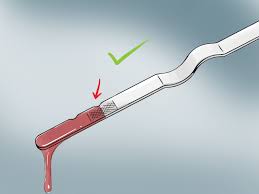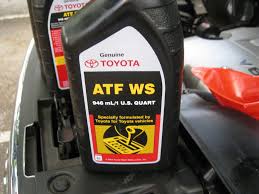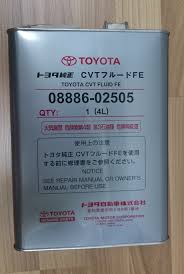Change AutomaticTransmission Fluid before you get
- Nabeel Ashraf
- May 23, 2017
- 5 min read
Manual: Most manufacturers recommend that manual transmission fluid be changed every 30,000 to 60,000 miles. Under heavy-duty use, some manufacturers suggest changing transmission fluid every 15,000 miles. Automatic: Service intervals for an automatic transmission vary from every 30,000 miles .
For Vehicle on the roads of Karachi it should be replaced every Km 35000.Putting the correct oil is also very important.Different cars in Pakistan produced locally or imported have different Oils .Like
Mercon V
Mercon LV,
Dexron VI
ATF+4
SP-IV
ATF-TIV
Toyota ATF-WS
CVT

5 Most Common Mistakes That Can Ruin Your Transmission
An automatic transmission needs periodic tuning every once in a while, just like how you get a checkup at the doctor every year or so. If you fail to service your transmission, chances are, dirt and contaminants will build up inside, causing your transmission to run sluggishly and develop problems over time. Leave it alone long enough and you’ll be greeted one day with a transmission that has failed from lack of maintenance.
But even if it shows signs of major transmission problems long before its demise, it’s probably too late even then to save it from premature failure. That’s why We at Al-Rafay Auto Repair suggest getting your transmission serviced every 30,000 to 60,000 miles, which roughly equates to 2-5 years depending on driving conditions and how much you run your car. Whether a transmission fluid change or a complete transmission flush, these services work wonders at greasing up your transmission for optimal performance (always make sure that the transmission filter is replaced every time).
But not only should you service your car every 30,000-60,000 miles, you should also make sure to inspect your transmission every month for any problems. Whether checking transmission fluid, looking for leaks, or testing for unusual sounds, make sure you have a schedule for examining your car and stick to it!
2. Running on Low Transmission Fluid
This is a huge problem for transmissions: running on low fluid. Automatic transmissions require transmission fluid in order to lubricate its many parts, provide hydraulic fluid pressure, and cool itself from any heat it generates. Optimal fluid levels mean your transmission will be working just as it should, but any less than that means it’s working overtime to compensate for the fluid deficit. Without enough transmission fluid to lubricate, provide fluid pressure, and cool the tranny’s parts, it’s much more likely to hike up its running temperature, leading to excessive heat which is the bane of automatic transmissions.
You can prevent that from happening by checking your transmission’s fluid levels regularly, and don’t forget to examine how dirty the fluid is either. If your fluid levels are low, chances are you have a fluid leak somewhere which needs to be plugged up ASAP.
3. Using the Wrong Type of Transmission Fluid
Just as disastrous as running on low transmission fluid is actually using the wrong type of transmission fluid. There are probably some people out there that believe all transmission fluid is essentially the same, but that couldn’t be further from the truth. Specific transmissions require specific ATF in order to perform optimally, and it’s your responsibility to make sure your transmission is getting the right fluid whether you are getting it serviced or adding fluid yourself. That’s because different types of transmission fluids have varying levels of viscosity as well as additives that are added in the mix.
Using an ATF that’s meant for another transmission will result in erratic hydraulic pressure and not the right cooling or lubricating properties. If you’re wondering what type of transmission fluid you should use, refer to this page.
4. Ignoring Problems Until It’s Too Late
Hear a strange noise ring out when you’re changing gears? Finding a dark red fluid staining your driveway? Experiencing grinding, shaking, slipping, or stalling? Any unusual signs you experience with your transmission is cause for concern, and it means that your immediate attention is required. After all, normal transmissions do not display any of these behaviors, and when they do it only means that something has gone awry.
Although damage to your transmission is inevitable if you experience any of these problems, your main priority is to get it fixed as soon as possible to prevent further damage. Continuing to drive your vehicle while red flags are warning you is taking a huge risk, and although bringing your car into a shop and its cost might worry you, a better and more logical question to ask is how much is it going to cost to rebuild or replace a transmission should I keep driving and have it fail prematurely? Don’t let stuff slide, read through our complete transmission problems guide for a list of what you could be dealing with.
5. Allowing Your Transmission to Overheat
Just think about it, even a 2 degree increase in your own body’s temperature means you have a fever, which generally results in poor performance and the feeling like you want to die. And how do you think transmissions feel? Well, if they could, they’d probably be either angry at you or just plain sad that you choose to ignore their health. High fluid temperatures are ultimately what kills your transmission; it is estimated that around 90% of all transmission failures are due to excessive heat. And although transmissions don’t suffer from the same ailments people do with just a two degree temperature increase, it’s commonly known that every 20 degree increase in fluid temperature can cut your transmission’s lifespan by up to half! Just look at the chart below to get an idea of what we’re talking about.
But what exactly causes transmission overheating? Most of it is often related to transmission fluid itself, so low, dirty, or burnt ATF is not a healthy choice for your transmission. However, there are other factors that can come into play such as transmission slipping, a defective solenoid, heavy towing, lots of stop and go driving, or a very hot climate. Connecting a transmission temperature gauge is a great way of “gauging” your transmission’s working temperature while on the road, and is highly recommended to prevent overheating.
Quick Tips on Extending Transmission Lifespan
Check and change your transmission fluid regularly (check once a month, change every 30,000 to 60,000 miles)
Add a dedicated transmission cooler if you tow a lot, have a large car that overheats easily, live in a very hot climate, or do lots of stop and go driving
Consider synthetic transmission fluid for better performance at resisting heat, cold, oxidation, and shearing
Do not exceed your vehicle’s GVW (gross vehicle weight) while towing or hauling
Avoid manual shifts (upshifts and downshifts) and place your shifter in the D position for automatic control shifts and shift timing for optimum RPM
Install a temperature gauge to inspect your transmission’s fluid temperature while driving (and keep it around 175° for the best results)
Set your e-brake while parked (especially on an incline) to put the weight of your vehicle on the brake instead of thetransmission’s parking pawl
When reversing, always come to a complete stop before shifting into Drive “D”
Check your tire’s air pressure as low tire pressure causes an extra load on your transmission, MPG, and your tires of course
Install a deep transmission pan to hold more ATF as well as provide extra cooling capability
Change your transmission’s fluid filter every time you have your transmission serviced
Avoid hard accelerations as they cause a lot of friction and heat within your transmission

















































Comments